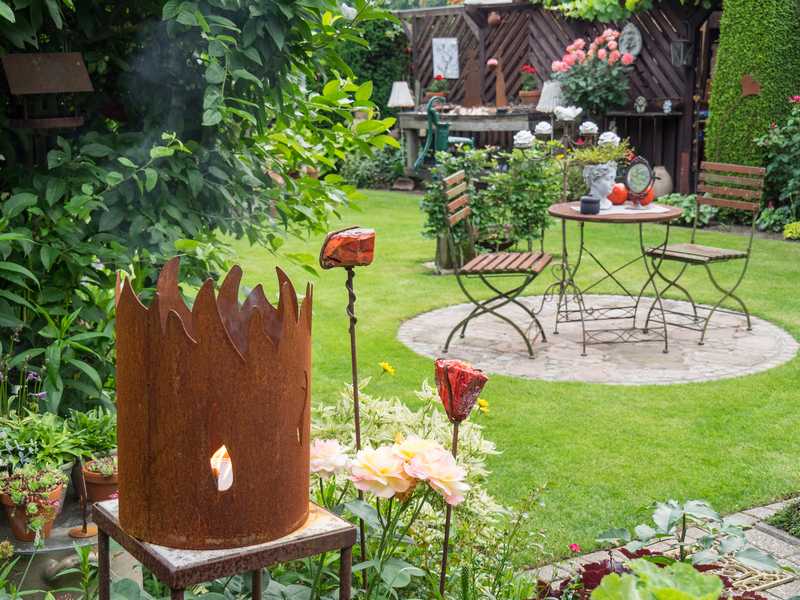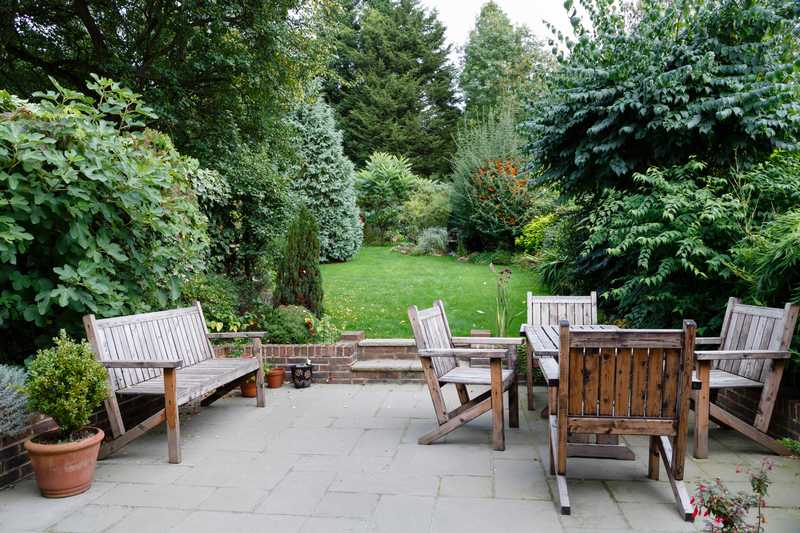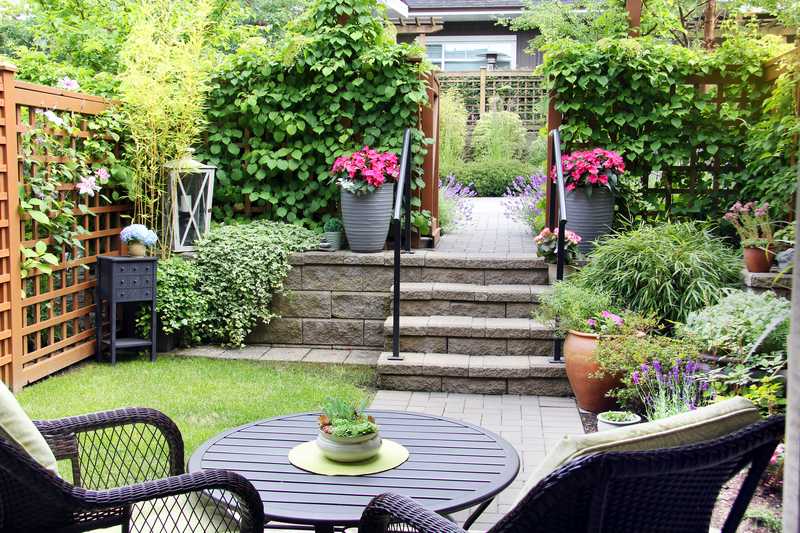
With a few tricks and a little whimsy, a small, long city garden can be set up as a larger garden. Discover the key elements for successful planning of your space as well as 3 detailed examples point by point.
How to successfully develop a long garden?
The narrower and longer the garden, the more visitors’ eyes are drawn to the back. The main stake in its development is then to organize the space:
- To divide the garden into 2 or 3 distinct zones hidden behind screens which make them mysterious and make you want to discover them.
- Or, on the contrary, to create an interesting perspective, gradually leading the gaze to a remarkable element located at the bottom of the garden.
You can do all the work yourself or rely on the landscaping of a terrace first. You will then organize the rest of the garden from its creation.
Vertical surfaces
Large, vertical surfaces, such as evergreen cedar hedges, walls or wooden panels, limit the garden and catch the eye inside. Hedges take a long time to grow, but they form soft, natural fences. Wood or mesh fences are inexpensive, but they last less. They must be replaced regularly.
Screens such as low trimmed hedges, low walls or even mid-high openwork trellises help structure the space and reserve surprises for visitors.
Geometric figures
Geometric shapes are everywhere in the curve of the beds, in the circular shape of a lawn space, in the rectangular rigor of paving … Skillfully arranged, the shapes and materials used to give them life underline and energize the design of the garden .
The materials
Stone, brick, wood, gravel, etc. are used to mark the paths and surround the terraces. But you can also plant all kinds of plants, green or flowery, on the edge. The harmony of the garden as a whole is a subtle play of different shapes and materials.
The plant show
Shrub and annual plants with deciduous or evergreen foliage … The plants used must display a range of different colors depending on the time of year. Each season must offer a unique spectacle.
To help you set up a small, long garden, here are 3 very detailed ideas.
A small garden, and full of ideas!

This small rectangular city garden is organized in one and the same space, but it is full of surprises and decorations to give the impression of enlarging it.
Geometric shapes
Geometry is everywhere in this little corner of the garden: in the round shape of the table and the paved floor of the terrace and even in the wooden patterns of the panels that make up the background of the garden table. They are also found at the level of plants, in particular in the topiary impeccably cut into a cone of the yew located to the right of the stage.
Particular care has been taken with the fences
They make up both the framework and the backdrop for the layout. Tall shrubs and climbing plants are planted. Or preferably use evergreen shrubs to provide a year-round backdrop.
They can also be decorative for their foliage, such as photinia, Eleagnus, or flowery and fragrant, such as bay laurel or Mexican orange. They then attract many pollinating insects and birds.
The smaller the space, the more it should be filled with decorative objects that fill the void!
Like here, you can have many decorative accessories: pots with succulents, a corten steel brazier that focuses the eye, false metallic tulips, lanterns, frames or even statues.
A long garden organized around 2 spaces

This small, long garden is organized around 2 well-defined areas: a terrace area and a more open garden at the back.
Play with the materials used
The terrace plays on the diversity of materials with a living room in aged and gray wood which gives a warm side to the scene and which contrasts with the use of a pretty stone paving on the ground, in cooler hues.
A difference in levels
The space of this terrace is lower than the rest of the garden. It is accessed by 2 steps. The transition is made using a low red brick wall that houses a planter for a small conifer, forming a vertical structure, and shrubs with dense foliage. (Fig tree, non-tracing bamboo, Photinia, lavender, potted boxwood on the sides).
The garden area at the back
The second part of the garden is arranged around a lawn which can be used as a play area for children or as a relaxation area in summer. On the right side, the shrub borders (Mexican orange tree, cotoneaster) draw a nice curve that creates a perspective effect towards a sumac of Virginia tree.
On the left, a magnificent blue tree offers an imposing vertical structure that requires one to look up in order to appreciate the whole scene.
An intimate city garden

This narrow and long garden, located in the city, is arranged in 2 spaces separated by a screen made of trellis, covered with climbing plants.
The first space consists of a small terrace located below the rest of the garden. Note the asymmetry of its organization: on the right side of the cobblestone path, a bed of perennials offers fresh and colorful notes. A lavender is planted on the edge, 2 large pots hold a hanging silver basket and low euphorbias. Non-tracing bamboos (Fargesia) make up a permanent background.
On the left side of the driveway, a short lawn provides a popular green carpet. The intimate side of the scene is palpable.
The 2nd space is hidden behind a green screen. It is organized symmetrically on either side of the cobblestone driveway. Lavender meets each other at the front, while a wooden trellis forms the backdrop that catches the visitor’s gaze. Tall perennials and a few evergreen shrubs soften its presence.
The paved driveway is the common thread of this development. Indeed, the entire garden is designed around this path allowing movement from one space to another.
